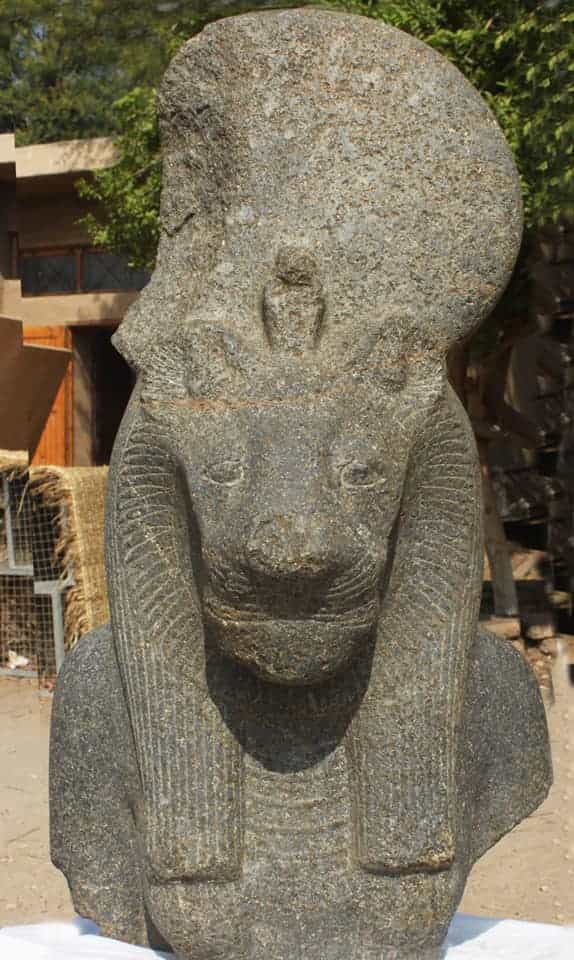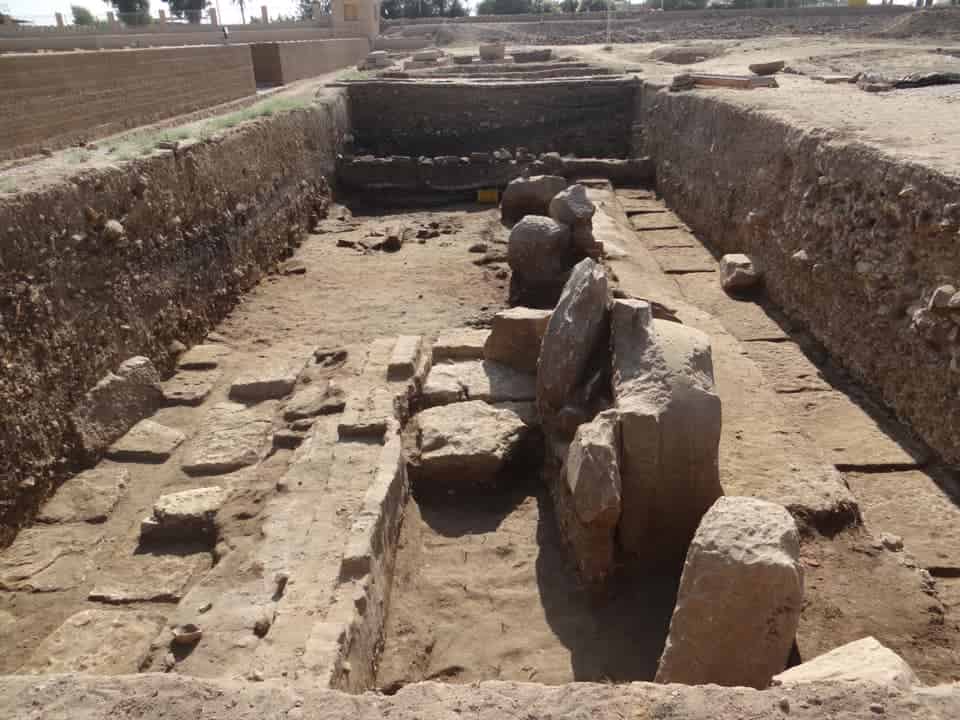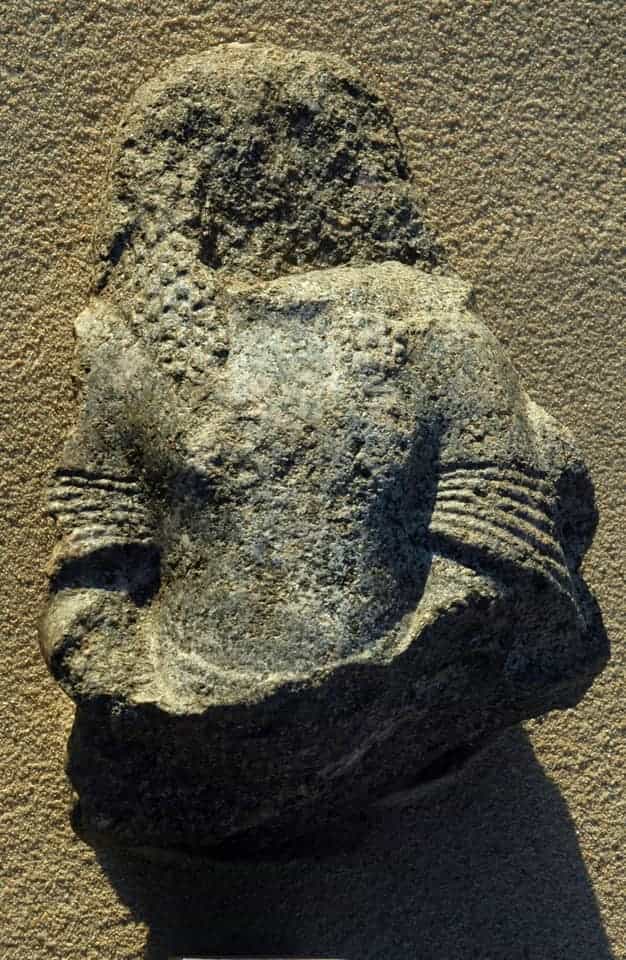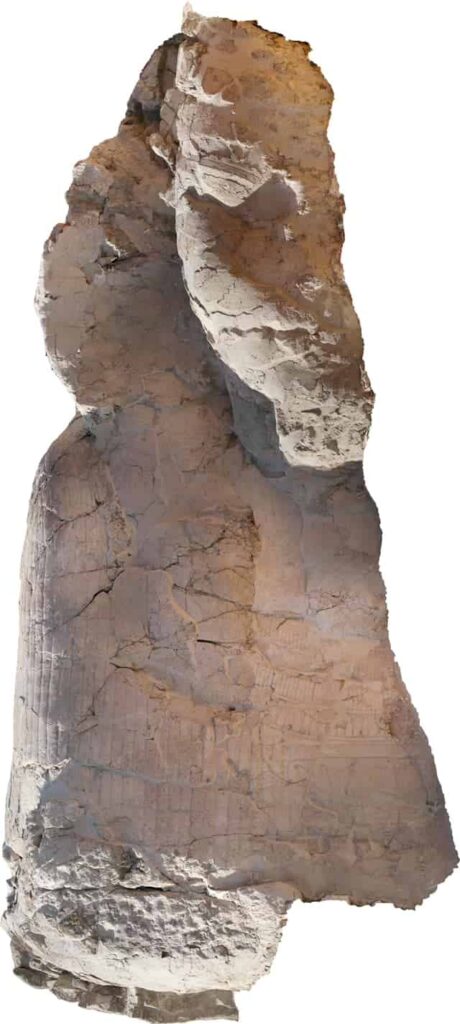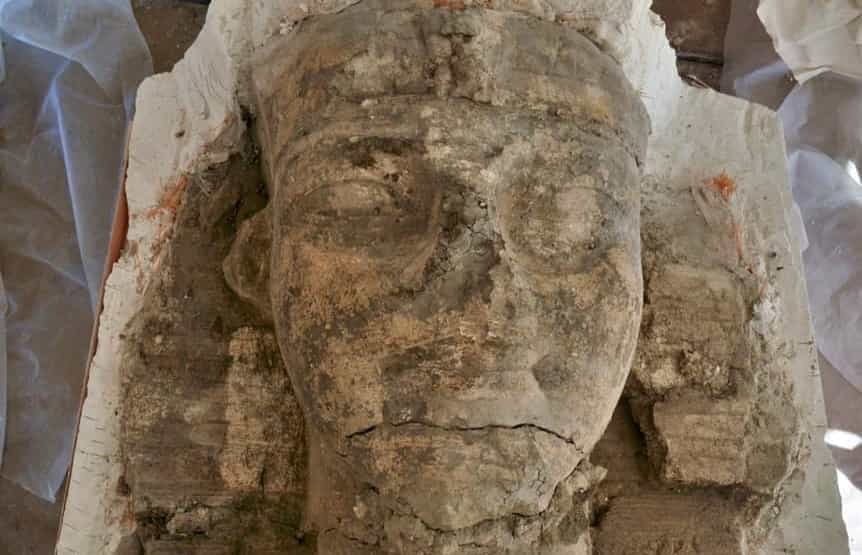In January 2022, a team of Egyptian and German archeologists made a significant discovery while restoring the ancient Egyptian temple of King Amenhotep III.
The temple, known as the “Temple of Millions of Years,” was a vast funerary temple built near the Nile river by the pharaoh who ruled around 3,300 years ago.
During the restoration, the team discovered two giant sphinx statues made of limestone, measuring around 26 feet in length. The statues depict King Amenhotep III in the form of a sphinx, a mythological creature with a lion’s body and a human head, complete with a royal beard and a wide necklace.
Additionally, the team also found three black granite busts of the goddess Sekhmet, a goddess of war and healing, often depicted as part lion.
The remains of the walls and columns were decorated with inscriptions of ceremonial and ritual scenes. According to Dr. Horig Sorosian, head of the Egyptian-German mission, the large sphinxes indicate the location of a procession road used to celebrate festivals.
After cleaning and restoration, an inscription was found on the statues that read “the beloved of the god Amun-Ra,” referring to the sun god often depicted as a sphinx.
The temple, built by King Amenhotep III, was destroyed by an earthquake that swept ancient Egypt. Its main purpose was as a place for offerings for the pharaoh after his death and movement into the afterlife.
The restoration project for the temple and the Colossi of Memnon, two massive stone statues of the pharaoh, began in 1998 under the supervision of the Egyptian tourism ministry.
Source: Egyptian Ministry of Tourism and Antiquities

